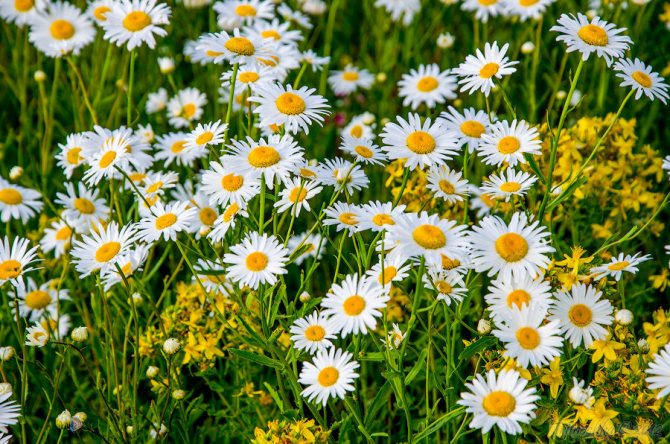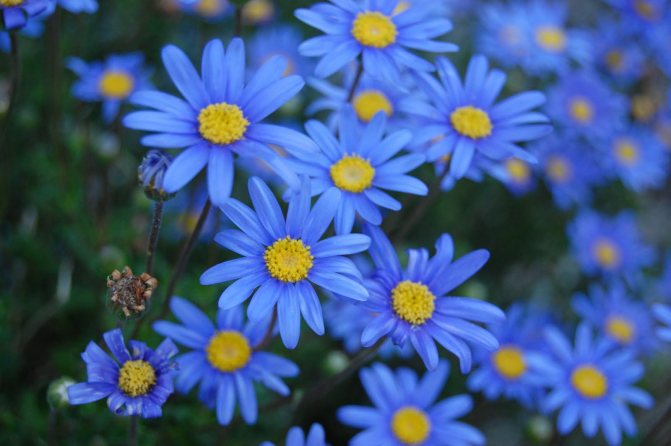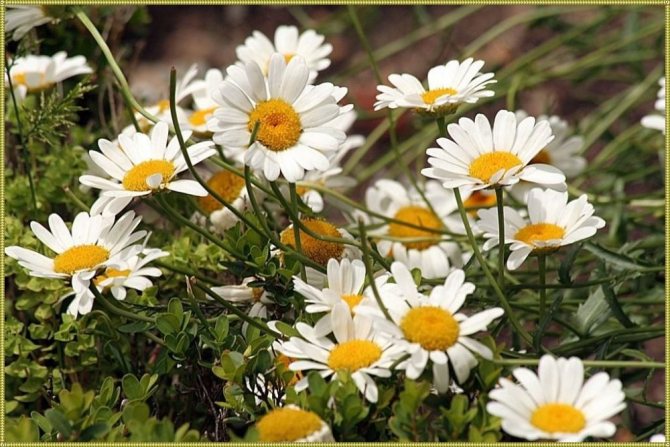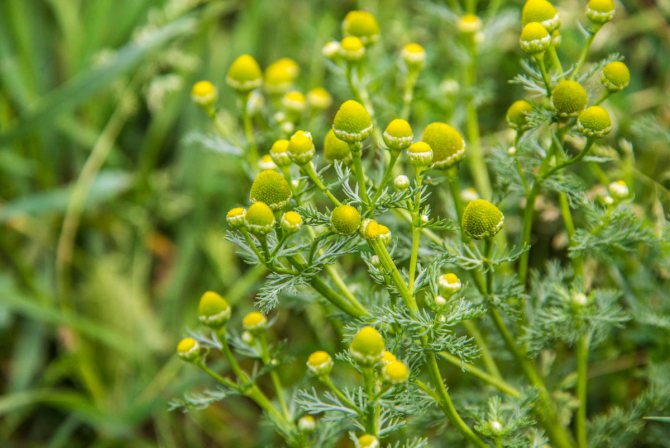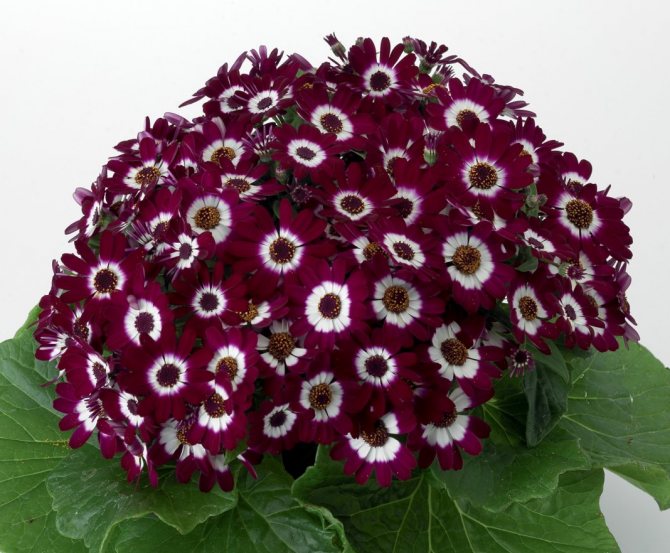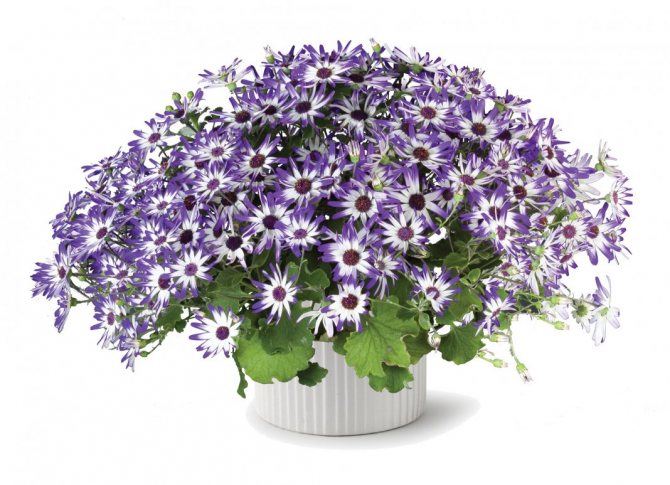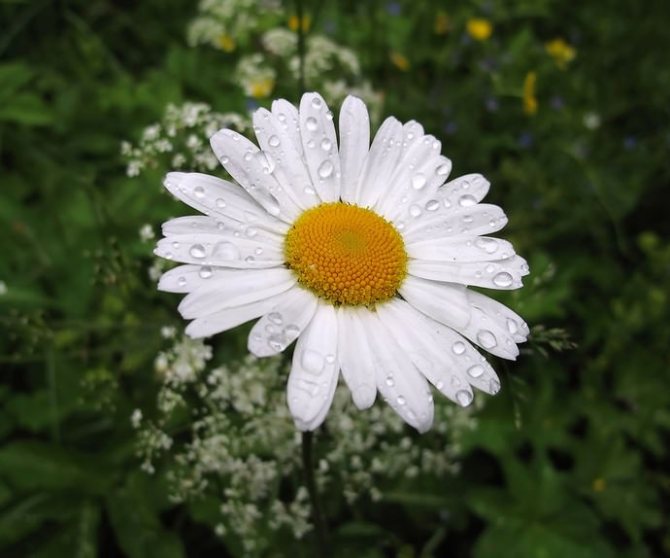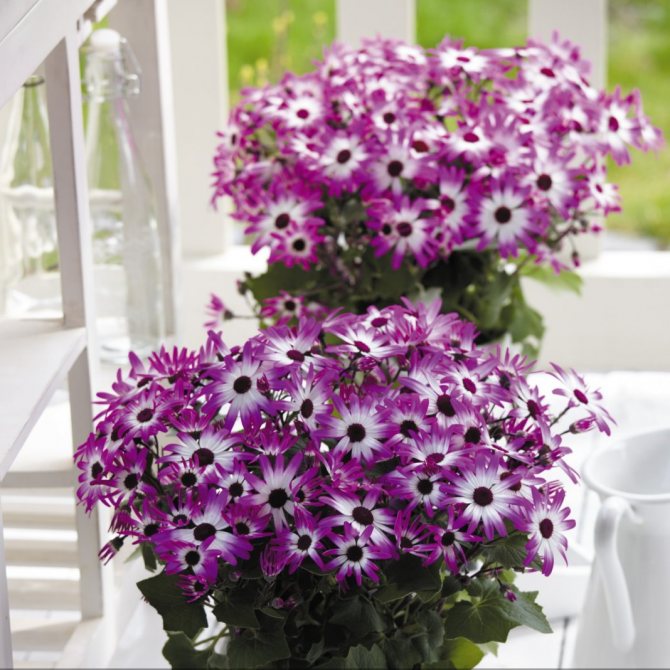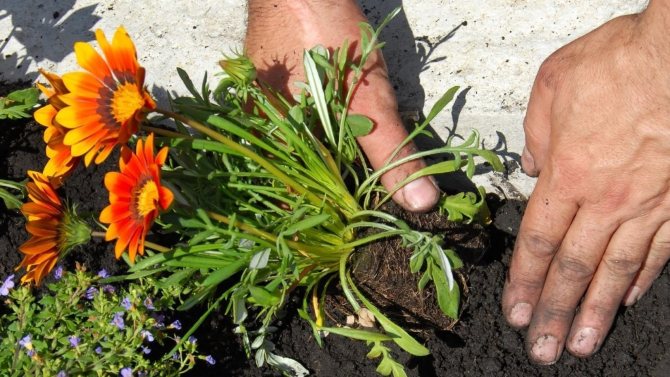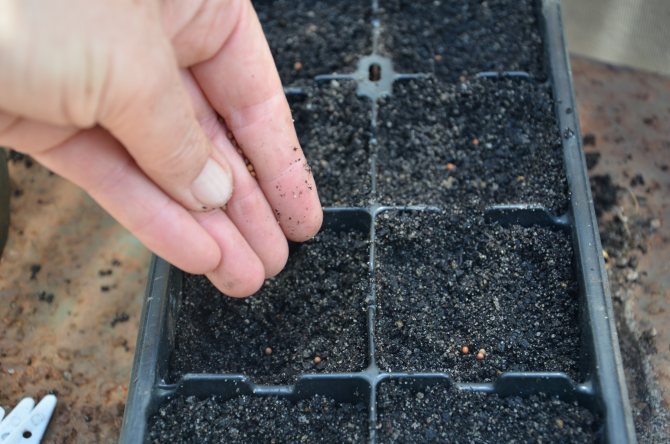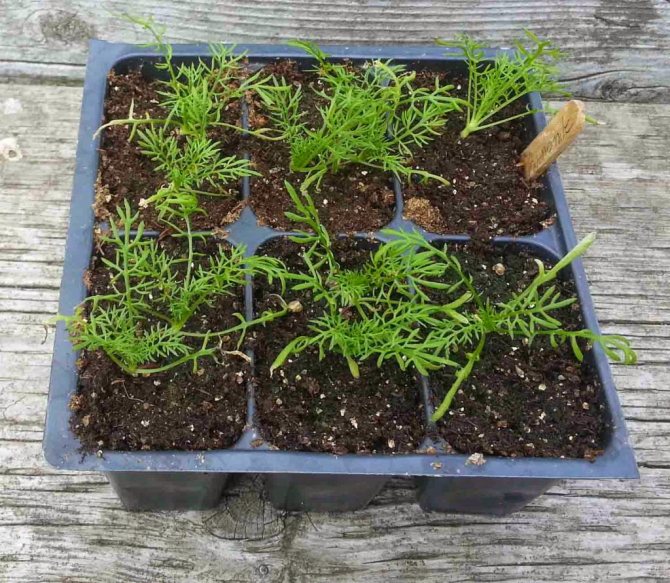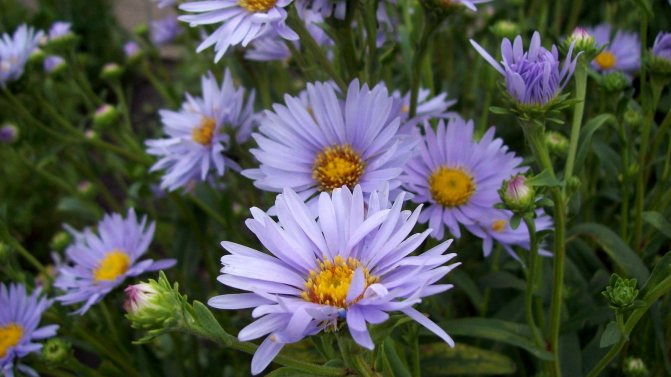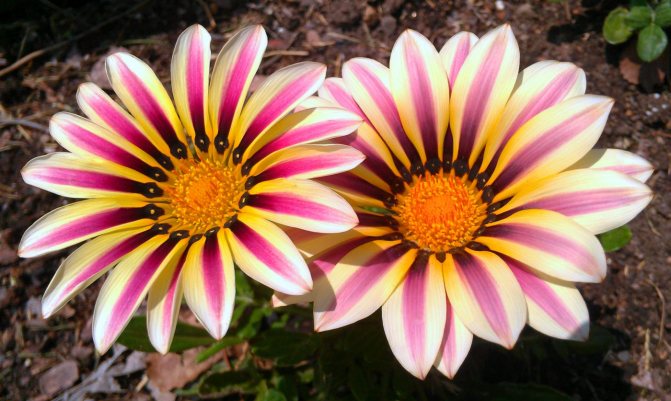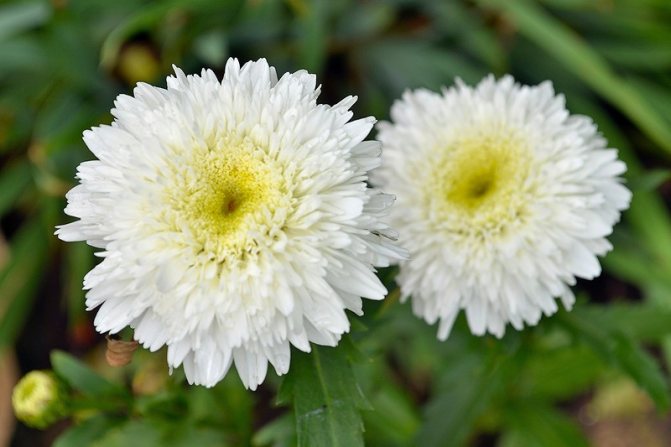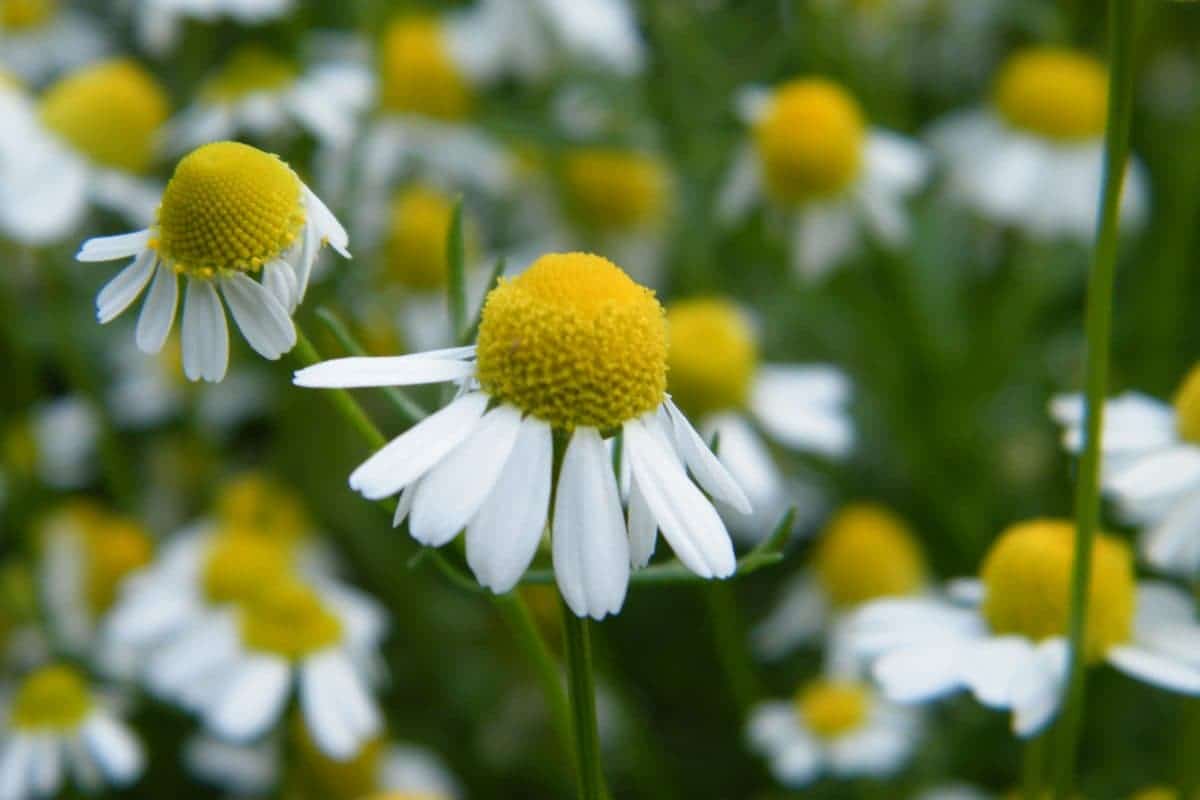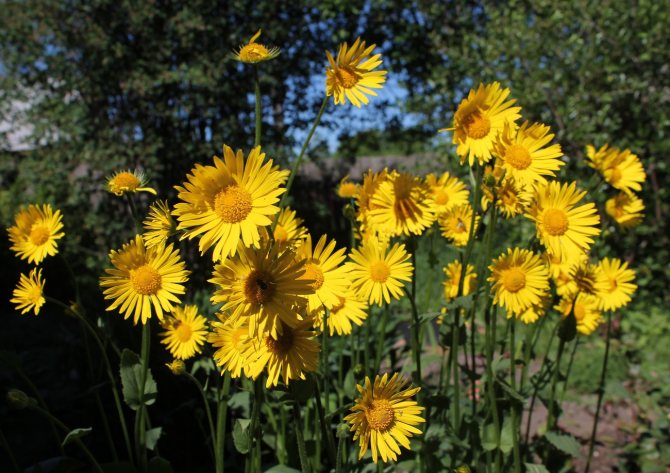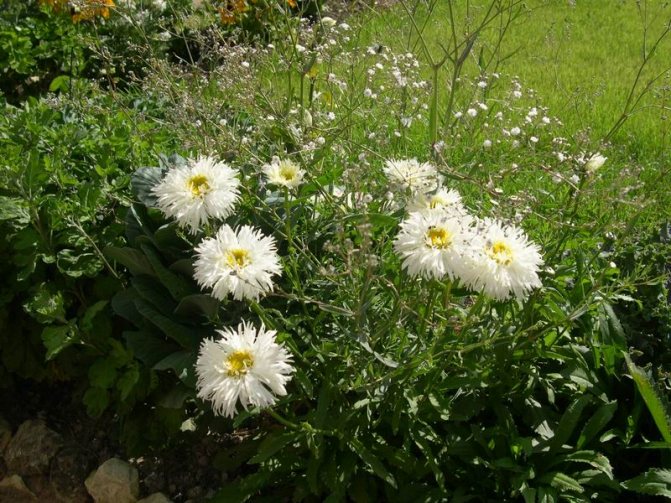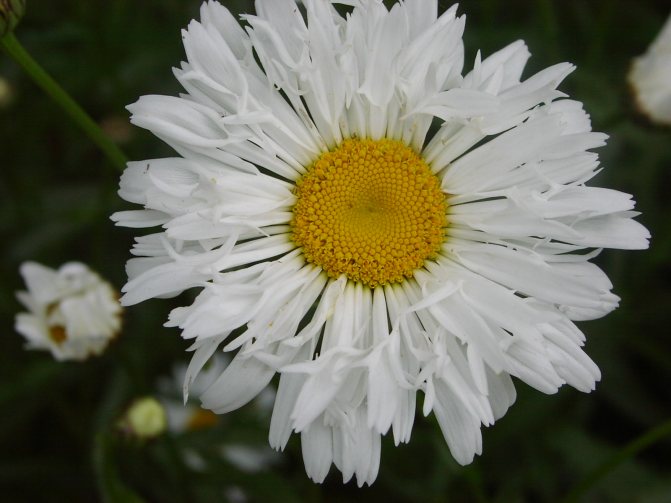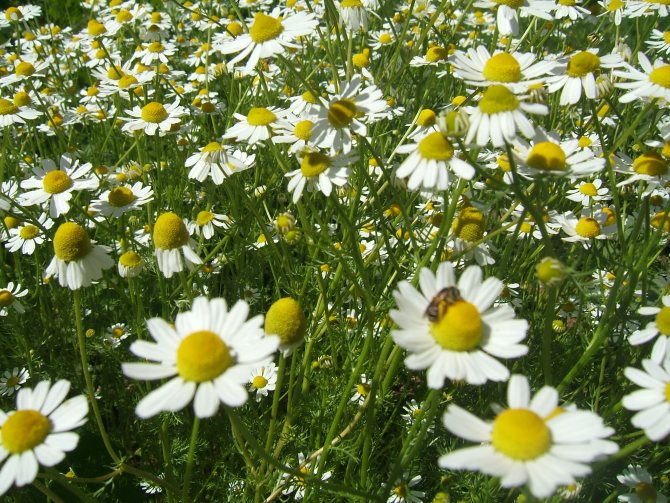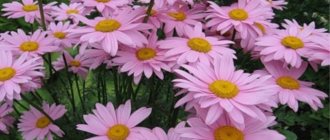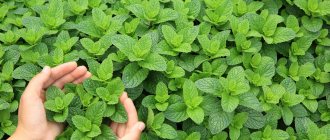
Having medicinal plants at home is very convenient and useful, and most importantly, simple. There are several ways to grow medicinal and tea herbs at home on the windowsill - individually or together, in a basket, pot or cup.
For example, we offer you this option:
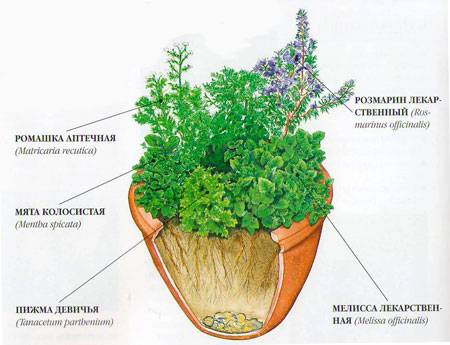

Medicines in a pot
To grow medicinal plants at home on the windowsill, you will need the following materials:
1. Ceramic pot with a diameter of 50 cm.
2. Flower soil and compost
3. Drainage
4. Waterproof non-woven fabric
5. Complex fertilizers and bark mulch
For planting, you will need pharmaceutical chamomile, maiden tansy, lemon balm, spearmint, medicinal rosemary. We distribute these plants in a certain way in the pot. The location of medicinal herbs will be determined by their characteristics.
pharmaceutical camomile planted in the middle of the pot. This erect medicinal plant blooms between May and August. Its dried flowers are used to brew medicinal tea.
Medicinal rosemary planted at the bottom right of the chamomile. It is evergreen and thermophilic, does not tolerate frost and therefore should also spend the winter in the house. Blooms from March to June.
Melissa officinalis this vigorous plant can grow up to 1 m in height. It needs pruning, otherwise lemon balm will outgrow its neighbors and may drown them out. It is used for making tea, desserts, drinks, and also as an addition when decorating bouquets.
Maiden tansy - we plant to the right of the chamomile. Its flowers are similar to chamomile and are used together with the leaves to brew tea, which helps with migraines.
Spearmint planted at the top left of chamomile. It is used to make sauces and tea. When brewing tea, take 3-4 mint shoots, grind and pour boiling water. After half an hour, strain the tea through cheesecloth or a strainer, add crushed ice and sugar or honey to taste.
How to grow medicinal plants in a pot at home


Pour a drainage layer into the pot. Then we mix the soil with compost (3: 1) and a handful of fertilizers. We fill the mixed soil into a pot, not reaching 5 cm to the edge. Now you can start planting plants. We plant chamomile first, then all the others. After the planting of medicinal plants is over, the soil must be tamped and mulched.
sait-pro-
Pericalllis - the main summer season of the spring season
True annuals can rarely be found among indoor plants. Most of the crops that are grown as annuals are actually perennials and, provided they are properly overwintered and a cold dormant phase, they can please for more than one year. But here pericalis in the rooms, unlike the garden, is really an annual plant that blooms for only a year and dies when trying to save. But how it blooms: bright and colorful, with acrylic colors and unpredictable combinations of variegated two-tone variations, this plant can fall in love with anyone in one season. Rustic plants usually appear on sale on the eve of March 8th. These vibrant bouquets, reminiscent of luxurious artificial compositions, compete in appeal with distillers and other spring stars, but are undoubtedly the first to grab attention.
Plants, today referred to as the genus Pericallis, are known to most flower growers and gardeners under completely different names - ground flowers and cineraria (hybrid, garden or bloody). The plant is often sold under the name of bloody cineraria.But the brightly flowering annuals that are grown in rooms are pericallis hybrids (Pericallis x hybrida or Pericallis hybrida) - various varieties that have undergone long-term selection. Pericalis belongs to Compositae.
Pericalllis are compact herbaceous plants, the height of bushes in which, even with inflorescences, does not exceed 20-70 cm. Large, velvety and very bright in color leaves with embossed veins on the surface are collected in the root rosette. The leaves of pericalis are reminiscent of primroses and saintpaulias, but unlike the latter, they create just a bright pillow for a cap of inflorescences. It is difficult to assess the heart-shaped shape of the leaves under the flowers, but the beautiful unevenly jagged edge only decorates them. The petiole is usually winged, the surface is velvety due to a light, pleasant to the touch edge.
Pericalllis bloom usually lasts only a month and a half. It does not stretch for the whole year, but even within a month the splendor of the camomile mod is revealed in full. From February to May, bright pericalis bushes can become the best accent color in the interior. Modern varieties and mixtures of varieties, especially of Dutch selection, are capable of blooming up to 4-6 months, but for this they need really ideal conditions and you can rarely enjoy such a show here.
Pericalis, like all representatives of the Astrov family, have basket inflorescences, collected in complex shields and forming a kind of cap over the greenery. The diameter of the flowers ranges from 2.5 cm to 5-8 cm in the best varieties and mixtures. Large and bright, they consist of a fairly large "center" of tubular flowers and a circle of lanceolate, spatulate or ovate ligulate flowers. In shape, pericalis resemble simple daisies, daisies, or non-double asters. Most often, plants produce simple inflorescences, although the palette of terry varieties has been actively expanding recently. Under normal conditions, each flower of pericalllis lasts a very long time and only in a warm environment the baskets fade in a few days.


Hybrid Pericallis (Pericallis hybrida), or Garden Ragwort, or Bloody Cineraria.
Depending on the structure of the bush, the height and flowering characteristics, the pericalis varieties are divided into several lines or groups - large-flowering Grandiflora up to 40 cm high, compact cushion-shaped, with abundant flowering - Nans and tall, from 50 to 70 cm, with star-shaped, narrow-petaled daisies - pericalis Stellata. Varieties and mixtures are selected according to the flowering palette.
A variety of colors is typical not only for the "petals", but also for the middle of the inflorescence. The ligulate flowers of pericalllis can be painted in classic yellow tones, and in different shades of pink, red, cream. Particularly popular are pericalis with an almost black "eye" or rare blue colors. And the main palette of daisies is capable of offering the most daring and unexpected combinations. Monochrome or two-tone, pericalis are always dazzling acrylic. White, pink, purple, red, lilac, cyan, blue are represented by both the darkest and the most bright candy colors, rare shades and luxurious halftones reminiscent of variegated fabrics.
Watering and moisturizing the plant
Indoor gerbera loves moderate irrigation, which prevents the soil from drying out. For irrigation, settled water at room temperature is used. Water is poured around the edges of the pot, avoiding falling into the root outlet. It is permissible to pour liquid into the pan, provided that the remaining water is subsequently drained (at least after 40 minutes). Stagnation of irrigation water in the trays is highly undesirable, as it can lead to a fungal infection. It is dangerous to use cold water for irrigating gerberas, it causes stress in the root tissues and provokes the development of diseases.
Dry air, typical of city apartments, can adversely affect plant growth, especially during the heating season. Features of growing room gerbera include daily spraying with a spray gun, providing watering of the leaves and stems with the finest water dust. When spraying, large droplets should be avoided in the outlet.
Caring for pericalllis at home
Pericalllises are very beautiful and showy. But they never became super popular indoor plants; and even today, in spite of their beauty, they are considered cultures rather for amateurs. The explanation is very simple: pericalallis requires conditions that are difficult to recreate in ordinary rooms. In order to admire its flowering, you will have to take care of a cool environment. And the need to constantly maintain high air humidity does not simplify the growing process. This is a capricious handsome man for those florists who are ready to fulfill all his requirements. After flowering, pericalis are thrown away, even if they try to save for the next year, these hybrids do not bloom, but most often die in winter.
Lighting for pericalis
For a luxurious room crumbs, you will have to provide the brightest lighting. Pericalis is not very afraid of direct sunlight (with the exception of midday), will happily settle on a moderately sunny windowsill or in a bright place with diffused light. Several hours of sunshine a day has a positive effect on the number and size of flowers.
For pericalis in rooms, the eastern and western windowsills are most suitable; in a non-gloomy spring, pericalis grow well on the northern windowsill. This plant does not like artificial supplementary lighting, it reacts poorly to fluctuations in the intensity of illumination during flowering.
Hybrid Pericallis (Pericallis hybrida), or Garden Ragwort, or Bloody Cineraria.
Comfortable temperature
The most difficult thing in growing pericalis is to choose a temperature regime that is comfortable for it. This plant, during the flowering period, for which it, in fact, is grown, will be comfortable only in air temperatures below 18 degrees Celsius. Budding, the formation of flower buds in a plant occurs at a temperature not higher than 15 degrees. The optimum temperature is 10 to 15 degrees, or about 15 degrees. The indicators can drop below 10 degrees only for a short time (but not lower than 4 degrees), the usual room temperatures for pericalis will not work. Pericalis loves fluctuations in day and night temperatures.
Pericalis can be placed in a cool greenhouse, on a terrace or balcony. This plant loves fresh air and tolerates low temperatures well. It can be taken outdoors for a day, even in March. Pericalllis can also be used as a garden plant.
Irrigation of pericalis and air humidity
The watering regime for this plant can be called standard. Pericalllises need stable moisture. Before the next watering, the top layer of the potted substrate should be allowed to dry. Drought and waterlogging equally negatively affect flowering, but if, during overflow, a quick correction of care and an increase in the intervals between waterings make it possible to compensate for the error, then after the soil dries out, pericalllis most often does not recover and withers very quickly.
It is much more difficult to provide the high levels of air humidity necessary for this summer. Pericalllis will delight with flowering only when the air humidity is from 60%. For a plant with velvet leaves and delicate flowers, the spraying method will not work, unless you use a fine nozzle and spray from a considerable distance. Pericalis prefers to install humidifiers or trays with wet pebbles and moss, on which the plant is placed so that the bottom does not touch the surface of the water.
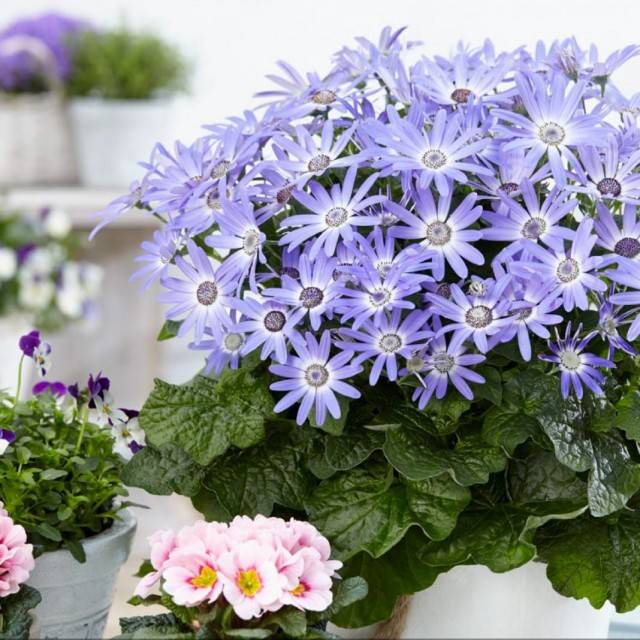

Hybrid Pericallis (Pericallis hybrida), or Garden Ragwort, or Bloody Cineraria. <>
Top dressing for pericalis
This plant blooms for a fairly limited period. If you got the usual pericalis, which fades in 1-1.5 months, then you need not feed it. The supply of nutrients in the soil will be enough for this period. Varieties with enhanced flowering, which can last up to 4-6 months, need additional fertilizing similar to garden potted lettuces. Fertilizers for flowering plants are applied at a frequency of 1 time per 2 weeks in a standard dosage or weekly in half doses. Intensive feeding at the beginning of budding will increase the flowering period. The plant responds well to long-term fertilizers.
Pruning pericalllis
This plant does not need to be formed: the leaf cushion already looks very neat and attractive, and the flower-bearing stems create a living bouquet above it without any help. All you need to take care of is removing the wilted flowers. They only spoil the attractiveness of pericalis (the plant does not cleanse itself on its own, dry baskets spoil the impression of neighboring inflorescences). But do not rush to just pinch off the daisies: pericalallis needs to trim wilted baskets with sharp tools.
Transplant and substrate
Since it is impossible to make the pericalis bloom again, the plant is not transplanted, and after flowering it is simply thrown away.
If pericalis is grown independently from seeds, then a universal substrate is used for it. The soil mixture should be light and loose, nutritious, of high quality. For pericalis, a universal neutral or slightly alkaline earth mixture is suitable. Usually it is made up of equal parts of sod and leafy soil, sand and humus (1: 1: 0.25: 0.5).


Hybrid Pericallis (Pericallis hybrida), or Garden Ragwort, or Bloody Cineraria. <>
Basic requirements for growing
These plants love good light in the room where they grow. A place where natural light is bright but diffused is best.
Also gerberas require good ventilation in the room, the stale air will interfere with their flowering. In the warm season, you can place them on the balcony or fix them under the window, since fresh air, warmth and good illumination are the key to the beauty and health of these plants. The optimum temperature during the flowering of gerbera is from 17 to 23 degrees, in cold seasons around the flower you need to maintain a temperature regime of 11 to 13 degrees.
Important! It is necessary to pay a lot of attention to the regime of watering and spraying gerberas in order to maintain the moisture level in the air and soil they need, but this point requires more detailed consideration, so we will return to it a little later.
Diseases and pests of pericalllis
The greatest danger to pericalllis is aphid. In a warm environment, it is capable of killing a plant in a matter of weeks, and the fight against the pest should be started as early as possible and immediately - with insecticides. Infected pericalllis must be isolated from other plants.
If the soil is waterlogged and temperatures below 8-10 degrees, pericalis can suffer from powdery mildew, gray rot, wilting and other fungal diseases.
Common Problems in Growing Pericalllis:
- sluggish leaves under too intense lighting in direct sunlight;
- yellowing and wilting of leaves with insufficient watering or in drafts;
- blanching of leaves in a sunny place;
- slight wilting of bushes, wilting of leaves with irregular watering and
- unstable humidity;
- complete wilting of bushes due to stagnant dampness or complete drought;
- loss of the characteristic color of flowers or its intensity with a lack of lighting;
- rapid flowering at too high a temperature.


Hybrid Pericallis (Pericallis hybrida), or Garden Ragwort, or Bloody Cineraria. <>
Diseases of room gerbera
A healthy plant that receives adequate moisture, light and the necessary nutrition is rarely subject to characteristic diseases. Lack or overabundance of micronutrients, violation of the irrigation regime, exposure to pests cause room gerbera disease, caused by a decrease in protective properties. A weakened plant is unable to fight fungal infections. For domestic gerbera, the greatest danger is infection with powdery mildew and mold.
Powdery mildew - a disease caused by microscopic fungi... The mycelium of the parasite has a characteristic white color and spreads over the surface of the house plant, forming a kind of plaque, similar to flour. The fungus draws nutrients from the gerbera, interfering with the process of photosynthesis. The main cause of this disease is a violation of the irrigation regime, leading to a decrease in gerbera immunity. In addition, the fungus can develop in conditions of an excess of nitrogen.
Gray and white mold develops in conditions of high humidity and rare ventilation of the room. On the soil and parts of the plant, plaque appears in the form of a crust, gray fluff or white powder. The spores of the parasitic organism move through the air, they can be in the irrigation water. For the prevention of mold damage, periodic disinfection treatment of surfaces with solutions containing insecticides is used.
Reproduction of pericalis
Pericalllis, like most annuals, are obtained from seeds. The flowering of the plant begins 8-9 months after sowing, therefore, seeds are sown for January flowering in April, and for March or later, in summer. Seeds are scattered on a leveled, moistened substrate superficially, without sprinkling with soil. Germinate pericalllis under glass or film, at a temperature of about 18 degrees Celsius. The heat has a negative effect on seedlings. Seed germination usually takes 10-12 days, picking should be carried out after the full development of the cotyledon leaves into boxes or large containers. As they grow up, after 1-2 months, they are transplanted into individual containers.
Prerequisites for growing chamomile
Without exception, all chamomile varieties are partial to well-lit areas, sunlight is necessary for the growth and proper development of the plant. Neutral soils with low acidity are considered the best for growing chamomiles. The soil for the cultivation of these flowers must be fertile, but chamomile is not capricious and will grow well on poor soil, subject to the mandatory conditions of care: feeding and watering. Since garden chamomile is a cultivated plant, it needs frequent watering for stable and large flowering. Regular watering must be established not only in drought, but also if you have sandy loam soil. However, in no case should you allow water stagnation in the area with chamomiles, the flowers can simply die from putrefactive diseases. It is better to make artificial drainage if groundwater occurs on your site in order to protect the plants from excess moisture.
Reproduction of cultivated chamomile can be done in different ways. Chamomile is propagated by seeds, seedlings or cuttings and rhizomes. Select only healthy shrubs with good quality flowering for propagation. When the flower stalks are ripe, and the petals become dry and begin to fall off, the brown seed baskets should be cut and dried in a well-ventilated warm room. Then collect the seeds, sort them, clean them of debris and store them in a special bag with holes until sowing so that the seeds do not deteriorate.Well, if your bush has grown, then you can divide it into several plants, for this you need to dig up the chamomile in the fall, carefully divide the bush, and so that the root system is evenly distributed between them. Then determine the chamomile for a new habitat, with mandatory feeding.
Sowing chamomile
Sowing can be started in the first decade of autumn or early spring, the time of chamomile flowering will depend on the sowing time. If you are sowing seeds, then it is better to do this in early spring, and in a month you will be happy with the shoots. However, keep in mind that low temperatures can harm garden vegetation, so sowing flowers should be carried out when the frost has completely receded. So, the depth for planting chamomile seeds should not exceed 3 centimeters. Chamomile can be sown both in rows and in a nesting method. The main thing is not to be mistaken with the spacing of the rows, for your own convenience when watering and caring for the plant. Seedlings are planted a month later in open ground. Planting is done in the same way as with seeds. Chamomile responds well to enriched, drained soils, and prefers well-lit areas. In the shade, the plant will stretch upward and curve. It is better to prepare loamy soils before planting chamomile, add peat or chopped straw mixed with sawdust to the soil in the fall. And in the spring, start sowing with peace of mind. Otherwise, loamy soil will lead to plant disease.
Transfer
For a gerbera to grow and develop, you need to take into account its natural rhythm of life. From late summer to late autumn, it goes through a flowering period, from November to February it is dormant, from mid-February until the next flowering, the gerbera is actively growing.
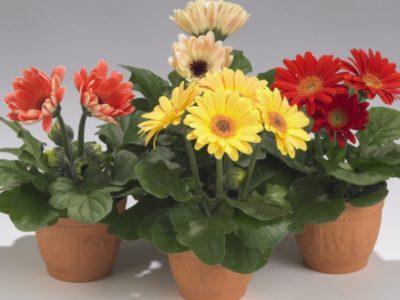

You cannot transplant a flower during the dormant period, this will disrupt its natural development and accelerate the “fatigue” of the flower, that is, it will be possible to cultivate the plant only for two years instead of the usual four.
It is best to change the soil and pot in early spring. The soil should be slightly acidic, composition:
- leafy soil, 2 parts;
- peat, 1 part;
- sand, 1 part.
When choosing a pot for transplanting, you should not choose one that is much larger than the previous one - it will be more difficult for gerberas to bloom in a very large space. Increase the size gradually.
The gerbera pot should provide good air access to the plant. Earthenware is best.
Chamomile breeding methods
As described above, chamomile propagation can be carried out in different ways, and one of the simplest is seed. Depending on the climate in your region, seeds begin to be planted between April and May. After sowing, it is better to cover the area with seedlings with polyethylene, you can wait for seedlings with this method of cultivation in two or three weeks. It is recommended to harden the seeds before sowing to avoid sowing stress.
Refrigerate the seeds for about a week. If you live in a region with an unstable climatic situation, it is better to sow seedlings in early April, and plant them in open ground in May when the frosts recede. To do this, pour the prepared or purchased soil into the container, sow the seeds and put them on the windowsill, from the sunny side, organize watering. When the seedlings pick up two, three leaves can be planted in open ground, taking into account the temperature regime, at night the temperature should not drop below +15 degrees, otherwise the plant will simply wither. It is easiest to plant seedlings in a nesting way in holes to such a depth that the soil covers all the roots. A young plant can be planted together with the soil in which it was sown, to do this, remove the chamomile from the container, place it in the hole and dig in with soil, lightly pressing down. After planting is complete, water the plants with warm water.
Chamomile is one of those plants that grow rapidly under favorable conditions. Proceeding from the fact that large bushes give small flowers, and the likelihood of being affected by fungal diseases increases every year, every five six years, it is necessary to transplant the plant, dividing the bush into separate families. It is permissible to dig up plants only in the fall, after the end of flowering. Dividing a bush is not a complicated procedure, just divide the bush equally, form a separate one and transplant it to a new prepared place. After completing the transplant, add top dressing. Reproduction of chamomile garden can also be carried out using cuttings, however, this process is complicated and is used in practice by gardeners in rare cases when the root system of chamomile is damaged, or it is not possible to collect plant seeds.
Possible difficulties
Growing Chamomile, it is necessary to take into account that self-seeding reproduction leads to the "capture" of the territory. The timely removal of the baskets will help to avoid the problem.
In thickened plantings, the stems of Chamomile stretch out, and the inflorescences become smaller. That is, the plant loses its decorative effect, essentially turning into a weed. It is advisable to update the landing every 3-4 years.
The appearance of plaque on the stems and leaves indicates a plant infection with powdery mildew. The peak of the disease occurs in the summer-autumn period. Damaged parts must be trimmed and treated with a fungicide of Chamomile. On the site in the section "Medicines" are presented effective drugs of the latest generation.
Subscribe and receive descriptions of new species and varieties in the section "flowering (garden)" by mail!
Can a flower familiar to everyone from childhood with snow-white petals and a brightly sunny center please the eye on the windowsill? Is there a room chamomile - sooner or later all fans of indoor floriculture ask this question.
Experienced flower growers claim that chamomile will feel as good in a pot as in the open field.
Chamomile varieties
Today, there are many varieties of chamomile, they all differ in flowering time, bud size, height and other vegetative characteristics. Famous varieties of chamomile, which are always heard not only among flower growers, but also among flower growers, are daisy, doronicum, pyrethrum, small-petal and pharmacy chamomile.
Nivyanik. Large garden chamomile, includes about twenty varieties. Many flower growers choose for their plots, the most common common, large and Kuril daisy. Such flowers are large in size, have beautiful double petals and a yellow core. Sycamore plants, like other varieties of chamomile, prefer a sunny area and nutritious soil. Daisy bushes grow rapidly, so they need to be planted every three or four years. The main difference between the daisy and other varieties of chamomile is its large size.
Small petals. The plant at maturity reaches a meter in height. Blooms from early June. Flowering lasts about two months. Small petal flowers come in different shades, are white, blue and pink.
Feverfew or Persian chamomile. The plant is bushy, reaches a height of one and a half meters. The size of the buds varies depending on the quality of the soil, the color is pink, yellow, red and white. Depending on the variety, it has double petals or ordinary ones. Loves saturated, well-drained soils, medium humidity and top dressing. It is recommended to plant the plant after reaching the age of four. Serves as a good remedy in the fight against house moths. It gets along well in a flower bed with others like them, as well as any varieties of poppy, bell and other garden plants.
Doronicum. This chamomile variety belongs to perennial plants with an early flowering period. It reaches a height of up to a meter.Flowers are unpretentious, feel great on poorly nutritious soil, thrive in shaded areas. Doronicum flowers are predominantly yellow. The plant begins to bloom early, flowering lasts about two months.
Pharmaceutical camomile. This widespread variety won the hearts of gardeners for a reason. Pharmacy chamomile has a whole range of medicinal properties. Chamomile serves as an antiseptic, pharmaceutical chamomile is used not only in pharmacology, but also in the beauty industry. Infusions and decoctions of chamomile fight against many diseases and are used in cosmetology. Chamomile retains its medicinal properties even in dried form, therefore, pharmacy chamomile is often found on domestic beds. Pharmacy chamomile does not differ in outstanding decorative qualities, the flowers are small, the plant grows up to 50 centimeters in height, and is unpretentious to the soil.
A stranger among his own
Having learned about the medicinal types of chamomile, it's time to remember those plants that are only suitable for fortune-telling "loves - not loves". Indeed, instead of pharmacy chamomile, perhaps everything that has a yellow center and white petals is harvested.
Common cornflower, or daisy (Leucanthemum vulgare) - perennial up to 80 cm high. It is also called meadow chamomile, Roman grass, white flowers. The stem of this plant ends in a single large, odorless flower basket. Most of us know this wonderful decorative perennial, often found in summer cottages, for its many garden forms. It is occasionally used in folk medicine as a sedative and anthelmintic agent, in veterinary medicine - against fleas. Long-lasting yellow color can be obtained from flowers. But more often it is used for girlish fortune telling and weaving wreaths.
Stinky pupavka or chamomile dog (Anthemis cortula) has the size and shape of baskets similar to pharmaceutical chamomile, but the receptacle at the top is covered with narrow bristle-like films, and the inflorescences have an unpleasant odor. Another type of navel is noble navel. It is known in European countries as Italian chamomile.
Mayweed (Matricaria inodora). Compared with chamomile, the pharmacy has a more spherical receptacle, larger baskets, which have no smell.
Occasionally, pharmacy chamomile is also confused with pyrethrum, but outwardly they have very little in common.
Garden chamomile care
Chamomile is not a whimsical plant, however, like all garden vegetation, it needs loosening, weeding, watering, replanting and protection from temperature extremes. So that the flowers do not grow smaller, and the plant pleases you with its appearance, chamomile must be transplanted every four years. To do this, the bush is dug out, divided in half and transplanted from the same place to a new one. Thus, the plant rejuvenates, giving new shoots. Chamomile is a strong plant with a well-developed root system, however, the proximity to weeds, and the struggle for a nutrient medium, can affect flowering. Therefore, the neighborhood with weeds is inappropriate; for this, weed as needed. Chamomile responds well to drained soils, with good aeration, for this, loosen the soil, but with care so as not to damage the roots and young plants. Chamomile winters well in an area protected from the wind, but if in your area the winter is cold enough, then you need to cover the flowers for the winter. The material will be straw, peat or sawdust. After the end of the growing season, the chamomile must be cut off, the entire ground part of the plant is cut off with garden shears.
Achieving a lush chamomile bloom is not difficult, you just need to take care of the plant. Regular watering and timely removal of wilted flowers will help achieve the desired result. The bushes will delight you with their lush flowering for a long time.Many gardeners recommend mulching the soil with chamomile plantings, in a thin layer in hot months and a layer of at least 20 centimeters in cold winter. Mulching perfectly protects chamomile bushes from the sun's heat, retains moisture, and in winter a thick layer of mulch protects the plant from the cold. In the spring, when the frosts recede, the mulch must be removed, since the overwintered plant will begin to grow actively, and for this it needs to be warmed up by the sun's rays; in addition, pests and dangerous pathogens of fungal infections can settle in the mulch after winter.
Chamomile feeding
In order for chamomile to bloom well, remain healthy and strong, it needs feeding. Top dressing will depend on the growing season of the plant. First of all, chamomile should be fed before flowering. To do this, dilute the purchased fertilizers for garden flowers according to the instructions and water the plant. You can use nitrophoska fertilizer, diluted with water in accordance with the instructions for use.
Subsequent feeding is carried out after the plant has finished flowering. Chamomile is fertilized with superphosphate and potassium. To process multiple bushes, you will need about eight liters of fertilizer. To protect chamomile from pathogenic flora, it is recommended, at the end of flowering, to add wood ash to the soil and loosen the soil well.
Chamomile pests and diseases
Chamomile has a fairly strong immunity, however, like all cultivated plants, it is susceptible to certain diseases. The main feature in preventing flower disease is prevention. Do not allow water to stagnate in the area, otherwise, the plant may be affected by diseases such as gray rot, fusarium, rust and other fungal diseases. Before replanting chamomile, treat the soil with fungicidal preparations. Cut off dead parts of the plant in time, apply insecticides.
Chamomile is perfect for decorating flower beds and making flower arrangements, and due to its unpretentiousness, ease of care and variety of varieties, it will satisfy the requirements of even the most capricious grower.
agricultural portal.rf
Today, there is hardly a person who does not know chamomile. This field beauty in a white dress has long conquered the hearts of millions of gardeners not only with her appearance and pleasant aroma, but also with her medicinal properties. This flower came to us from the Mediterranean and took root perfectly in our climate. There are about 20 known varieties of chamomile, which differ in size, color and life expectancy (annual and perennial).
The most common pharmacy chamomile has medicinal properties and contraindications that need to be carefully studied. Knowing how to correctly treat with chamomile, you can use its beneficial properties for various ailments. The most popular are chamomile tea and infusion.
Daisies are usually grown in a garden or greenhouse, but they are just as easy to plant in pots at home. Seeds are planted in the ground for winter, and in a pot or box, planting is done in early spring. The soil should be fertilized immediately, if you plant in sandy soil, then it is desirable that there is a little lime there and be sure to add mineral fertilizers, you can compost or humus.
- Growing gladioli from a bulb ← Published: Dec 25, 2015
- How to care for begonia ← Published: Dec 25, 2015
- How to care for violets ← Published: 30.Nov 2015
The soil for chamomile should be water-permeable. It is better to take a pot for planting wide, but not deep. After 3-4 weeks, the first shoots will already appear from the seeds. When two full-fledged leaves are formed, this means that it is time to plant the seedlings in separate pots, in which the chamomile will already grow constantly.
These flowers are very fond of warmth and it is desirable for them to be in the light for at least 5 hours a day, but they will perceive partial shade just as well.So feel free to choose the sunniest windowsill and place a pot of chamomile on it. It is not difficult to care for chamomile, good watering, especially on hot days, periodic loosening of the soil, weeding from small weeds and chamomile will delight you with its pristine beauty and delicate aroma.
And a few more tips. Watering is necessary as the soil in the pot dries, but the water should not stagnate. Prune dried flowers to create new ones. For the winter, chamomile shoots are pruned and placed in a cool place until early spring, water sparingly. At the end of February, we return the pot to warmth and wait for the flower to start growing again, gradually increase the amount of watering.
Beneficial features


Of all the variety of existing flowers, it is chamomile that stands out for its pronounced medicinal properties. Since ancient times, these flowers have been used by healers to create effective drugs that cured a wide range of various diseases. Thanks to the pleasant aroma that is characteristic of chamomile oil, the flower has become in demand not only in modern medicine, but also in various fields of cosmetology.
Features and useful properties of chamomile are unique and give it a truly miraculous power. The essential oils contained in its composition are composed of a number of useful components that provide effective anti-inflammatory, antiviral and antibacterial effects.
In addition, the composition contains fatty acid glycerides, phytosterns, polysaccharides, coumarins and choline, which soothe the central nervous system, as well as help cope with insomnia and the negative effects of stress. That is why it can be used both externally and internally, has no contraindications for age, gender and other characteristics.
Indoor chamomile: what species can be grown
— medicinal... Pulling out several bushes of medicinal chamomile in a meadow and planting them in a pot, you can grow a real green pharmacy on the windowsill. In order for room chamomile to please for a long time, the earthen lump must be constantly moistened. Watering should be monitored very carefully - water stagnation should be excluded. Indoor chamomile loves spraying with warm water and regular feeding in the spring and autumn. Chamomile grown under such conditions does not lose its medicinal properties. What problems will help to cope with infusions and decoctions of this plant, see here. Make sure the benefits of chamomile are overwhelming and well worth the effort of growing it indoors or harvesting its inflorescences when the opportunity arises.
— decorative... Flower shops offer seeds for ornamental hybrid plants. Their maximum height reaches 20-25 cm. Choose a light nutritious soil, take a plastic pot, plant the seeds there and place on a sunny windowsill. It remains only to wait for the emergence of seedlings. When the first buds appear, chamomile is fed with fertilizer for flowering.
— maiden or feverfew... Common varieties of this plant are the Golden Ball, the Snow Globe. After emergence, these daisies will bloom in 80-90 days. They respond gratefully to pruning.
Interesting fact! The smell of girlish chamomile is not tolerated by flies and some other insects. Also, the scent of these yellow-white flowers has a positive effect on the nervous system and relieves headaches. Several perfumery companies in Europe produce perfumes, the base component of which is maiden chamomile essential oil.
Below in the comments I propose to share whether you managed to grow indoor chamomile on your windowsill.
komnatnye-
Species and cultivation
The indoor version of daisies is completely unpretentious. Knowing some of the secrets of proper cultivation, you can end up with a beautiful bush. Indoor daisies are not only pleasing to the eye, but also bring practical benefits.This is another plus of these useful plants.
Decorative chamomile
Feels great both on the windowsill and in the garden.
Often, gardening shops offer seeds of various hybrids that grow no more than 20 cm. From such a seed, you can grow chamomile at home. An ideal place for a flower to grow is a windowsill on the sunny side. The container must be taken not too deep, but rather spacious and wide. A white clay or plastic pot is suitable. Drainage must be placed on the bottom of the container. For planting, a light, nutrient-rich soil is suitable, which does not retain water, but passes it well.
If a small plant has already been purchased, it is recommended to transplant it. To do this, mix in equal proportions universal soil, sand, as well as soil from the greenhouse. Such soil is rich in minerals due to rotted fertilizers in the form of sawdust, ash, chicken droppings. In addition, this soil mixture is suitable not only for indoor chamomiles, but also for other plants: balsams, begonias, and roses. At the beginning of the autumn heating season, it is recommended to place containers with chamomiles on the windowsill from the southwest. So the plants will continue to delight with their flowering for some time.
At the end of flowering, the plant must be cut off, then transferred to a cool, bright room. Watering should be gradually reduced until February, but care must be taken to ensure that the soil does not dry out. At the end of February, the chamomile should be brought back to warmth. Increase watering only when the active phase of flower growth is observed. In addition, when the first buds appear, top dressing (special fertilizers for flowering indoor chamomiles) and abundant watering are needed. In summer, when it is not too hot, flowers can be taken out onto the balcony.
Chamomile officinalis
This plant is well known to everyone, and many have felt its healing power on themselves. Anyone can grow this type of daisies at home. If the kitchen has enough warmth and light, this is the ideal place for this plant. The medicinal species, like indoor chamomiles, loves light, so the pots are best placed on the south side. In order to get a bush of this wonderful grass at home, you need to take several small specimens in their natural habitat and simply transfer them to a pot with moist nutrient soil.
The indoor version of medicinal chamomile loves to keep the ground constantly moist. Drying and stagnation of water must not be allowed. In order for the flower to be more lush, it is recommended to spray it with warm water. To make the bush look like a decorative one, it can be cut to the desired shape. Top dressing is an important aspect. You need to fertilize chamomile during the spring and until late autumn. It should be borne in mind that a medicinal plant grown at home in a pot does not lose its healing properties at all. It can be used for inhalation, brewing tea, making infusions.
Chamomile maiden
Another flower that is easy to grow at home. The pots can be placed both in a bright place and in partial shade. This type of plant is distinguished by its quick adaptation to any soil, so the composition of the soil does not play too much of a role. You can grow a girl's chamomile both on purchased soil and on fertile soil taken from the garden. The flower is able to withstand the dry period, abundant watering will be harmful to it. Long-term wetting of the soil in pots should be avoided. Flowering will delight the eye for a long time if you constantly prune. To do this, it is necessary to remove dried inflorescences immediately after they have faded.
This species is so unpretentious that it can be transplanted even during the active flowering phase. The main thing is to keep a sufficient amount of soil on the roots. It is very easy to propagate bushes by dividing.In addition, seeds are used for these purposes, which germinate very quickly. Chamomile grown from seeds bloom 70-100 days after germination. There are many varieties of girlish chamomile - Golden ball, Snow globe, Species. This indoor flower brings many practical benefits. For example, flies and other insects do not like its smell. In addition, live plant bushes perfectly purify the air. Its aroma has a beneficial effect on the nervous system, it is able to relieve the emotional state and headaches.
www.dom-
Release form and application
Chamomile has many different release forms, but they all serve to restore human health.
Procurement of raw materials
The plant is harvested when the chamomile flowers are in full dissolution and are located horizontally relative to the ground. Therefore, if the petals are deflected in any direction, the flower is considered not ready for collection for medications.


Chamomile flowers are harvested in June - August
Collect the flower heads by hand so as not to pluck the peduncle along with the flower. Wherein flowers must be folded in a wicker basket so that they can breathe... If you put them in a plastic bag, they will suffocate there and begin to rot.
Dry in a well-ventilated place without direct sunlight.
Butter
To obtain butter weighing 1 kg requires 200 kg of raw materials... It is made using steam distillation and all funds spent on production are fully justified by the healing properties of the resulting oil.
Chamomile oil helps with insomnia, relieving anxiety and unnecessary nerves.
Decoction and infusion
To prepare the broth, you will need a small saucepan for the steam bath. Put 3 tablespoons of dried flowers in it and pour 250 grams of boiling water... A broth is prepared in a steam bath for about half an hour.
After it cools down, it is filtered and used to rinse the sore throat.
Chamomile tea
For 200 grams of boiling water, you should put one teaspoon of dried chamomile... Cover with a saucer and let it brew for 10 minutes. To make the tea seem more familiar in taste, it is worth adding a couple of teaspoons of sugar to it.
This tea is used to relieve stomach pains and colds.
Baths
In order to prepare a bath product it is worth take 25 grams of dried flowers and pour a liter of water... Boil for 15 minutes over low heat, cool and drain. The bath product is ready.
It helps to relieve allergic skin rashes and dermatitis.
Any treatment with Chamomile should be carried out after consultation with your doctor.
Cream
Chamomile oil is bought and mixed with petroleum jelly. This mixture should be kept in the refrigerator to prevent spoilage.
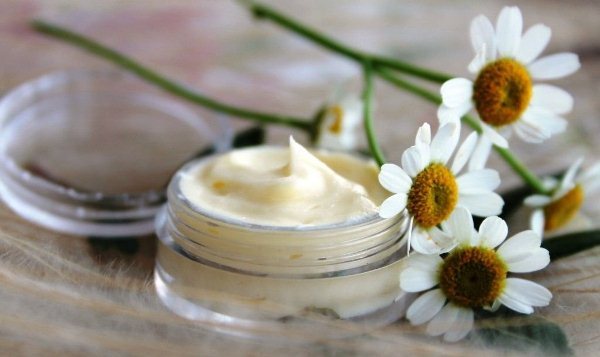

Chamomile cream is used for almost any skin type, making it versatile.
With this cream, you can soothe any irritation on the skin.
Douching
Douching is done on the basis of a decoction of pharmacy flowers. It is natural the agent is used to relieve inflammation of the hollow sphere.
Tampons
They take the most common tampons and soak them with a decoction made on the basis of pharmacy Chamomile. Procedures are done at nightremoving the tampon in the morning after waking up. Helps with thrush.
For cosmetic purposes
For cosmetic purposes, you can on the basis of a decoction, make baths, cream, ice, with which you can remove puffiness under the eyes.
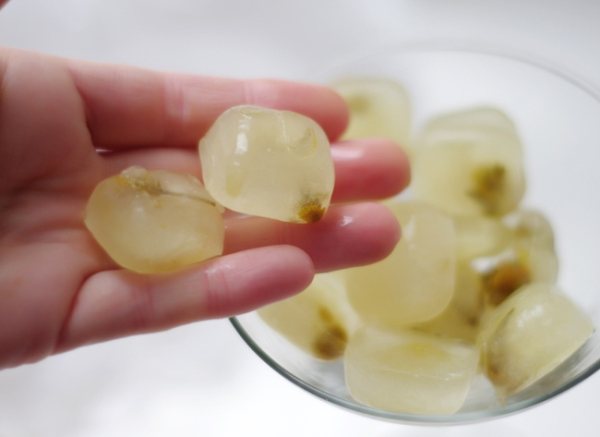

Chamomile face ice - an effective tonic
All remedies will help get rid of inflammation, edema and allergies.

